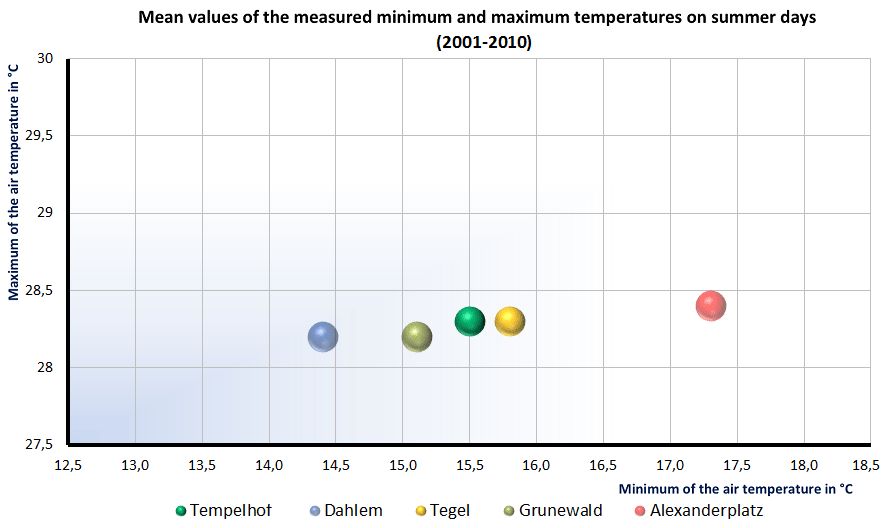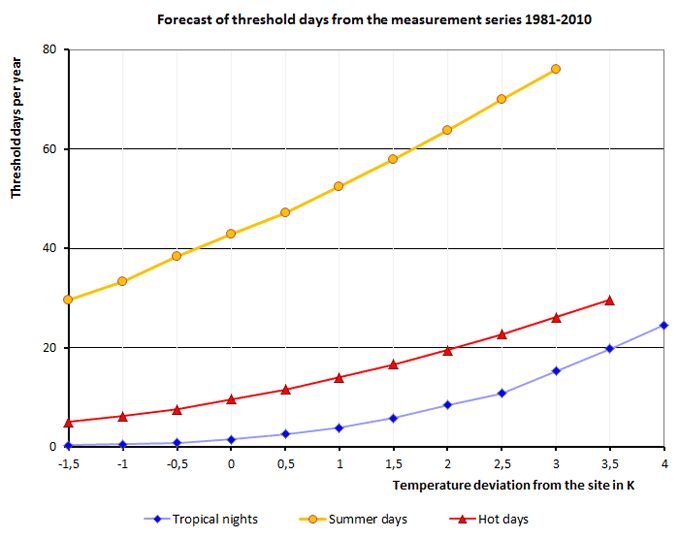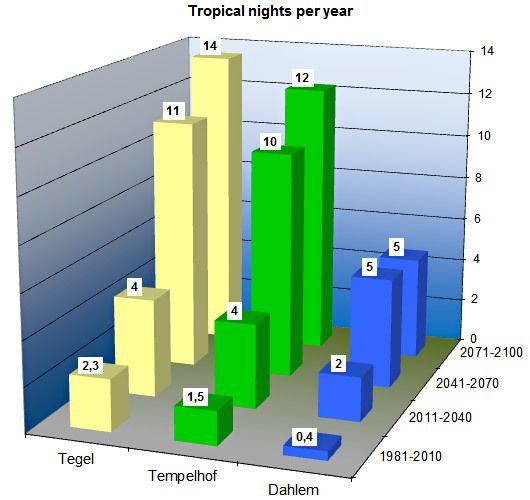In the ERDF project 027 “GIS-based modelling of parameters relevant to urban climate on the basis of high-resolution data on buildings and vegetation”, the characteristic spatial distribution of the summer minimum and maximum temperatures in Berlin and its surroundings was already simulated based on a model, statistically analysed and published as a separate topic with respect to the summer threshold days of the past decade 2001-2010 (SenStadtUm 2015, 2016).
The work steps and analyses described here in the following build on this. This text contains only a selection of the tables and figures created in the framework of the project. All analyses for this map can be downloaded in a single archive: Entire analysis of the Berlin climate stations (zip; 49 MB).
As described, the methodological approach (described in detail in GEO-NET 2016) was based on the insight that the urban temperature conditions (always referred to the official measurement height of 2 m above ground in the following) are determined by the predominant weather conditions on the one hand and by the location of an area within the municipal area on the other. The combination of the available results of the detailed comprehensive modelling at selected points in time with the station results of measuring points in long-term operation thus allows conclusions to be drawn about the temperature behaviour of arbitrary sites also at points in time other than the ones modelled. The temperature differences of all areas with respect to the reference stations can be determined, which in turn represent different characteristic urban use structures situated in the surroundings of the measuring instruments (cf. Fig. 1). The influence of this location effect particularly on the nocturnal minimum temperatures is illustrated in Figure 2.



